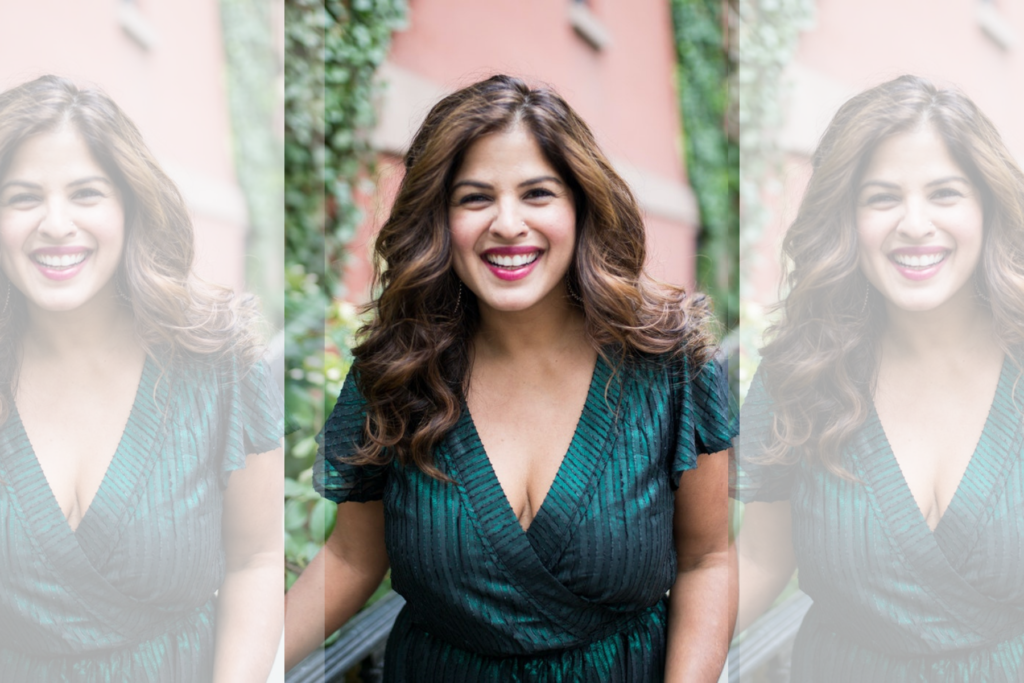
Photo provided by Nitika Chopra
One of the most difficult, but worth-it, journeys you will ever go on is the one of self-love. Loving your whole self is a daily practice. Especially as women of color, it almost seems like the world wants you to not to love yourself. Women are told so many myths, every aspect of their being is policed — from their body, their skin, their profession, whether they chose to or can become a parent, their hair, their attitudes and personality — literally everything. The loudest message we get is: if you love yourself, you’re arrogant — and nobody likes an arrogant girl.
As a therapist, I work with a lot of young women who struggle with self-love, spending time alone and acceptance. One thing that makes a big impact on this experience is having role models who embody self-love and who show you the healthy way to practice self-love. That’s why I love the mission Nitika Chopra is on. She is the founder of ChroniCon, a community focused on empowering chronically ill individuals and helps them focus on inner and outer beauty; the platform is a vehicle for spreading awareness and the message of acceptance.
[Read Related:How to Find Mental Health Balance as a South Asian Millennial]
Starting her career in beauty-media, Chopra realized that she wanted to use her skills for something deeper: to help people find their joy and purpose. Having lived with Psoriasis Arthritis, she knew she wanted to create the community she so craved a young girl and woman herself. The chronically ill community in the South Asian diaspora is almost invisible, even though 6 out of 10 Americans live with a chronic illness (and nearly 5.4 million South Asians live in America — so you do the math!).
View this post on Instagram
Chopra shares anecdotes of her youth and the struggle to love herself when everyone around her (well meaning or not) was pushing her to be ashamed of her chronic illness and the way it showed up in her life. That’s why spaces like Chronic Con are so important, because it helps folks unify over the experiences they have, not just the symptoms, and find ways to be celebrated and want more for themselves. Self-love is about seeing yourself as a whole person, not in separate parts (with parts you reject, hide or are ashamed of). Chronic illness has a strong mental health component as well. There are day-to-day struggles and difficulties in advocating for yourself, which can impact your sense of self-worth. Learning to manage and set boundaries with family and loved ones, speaking up for yourself and finding joy are all things that find an added layer of nuance.
[Read Related: A Guide to Sensory Friendly Diwali Celebrations if you Have Children With Disabilities]
One of the things that I find to be the most empowering, in chatting with Chopra, and even thinking about my own work in mental health is: your chronic illness (whether it’s physical or mental) is not your entire identity. It is one part of you, and yes it may be a big important part, but it is one part, nonetheless. So, I encourage any readers to reflect on their whole selves, and work to start their self-love journey — no matter what anyone else says to you!
Here are a few tips to help you get started on your self-love journey:
View this post on Instagram
“So many of us with chronic illness feel stuck in a world without accessible, inspiring support. Even if you are one of the lucky ones who have encouraging and respectful family or loved ones, chances are high that you have felt incredibly alone in your journey and long to connect with people who truly just “get it.” No one should ever have to deal with chronic illness alone or miss out on joy because they just haven’t seen how to create it yet.” — From the ChroniCon Community website.
If you are living with a chronic illness, make sure to check out The ChroniCon Community




